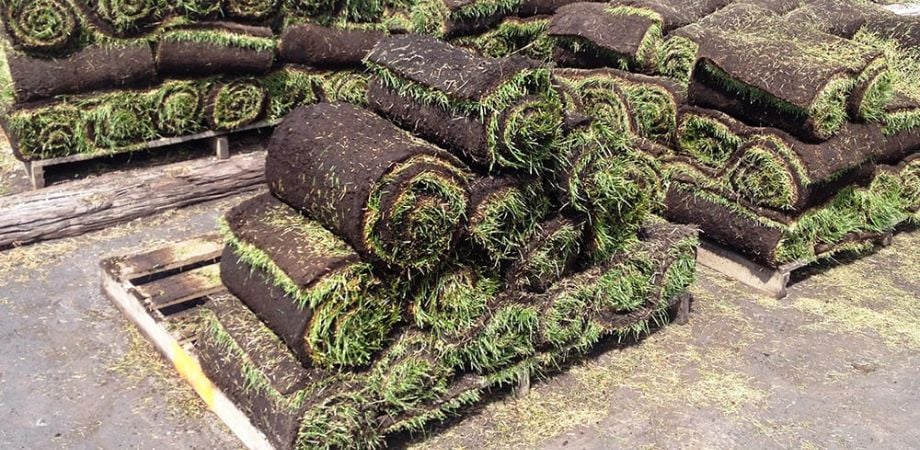What type of plant is American burnweed? This fast-growing weed, also known as Erechtites hieraciifolius, or more commonly, fireweed, is an annual summer weed known to target disturbed and low-maintenance areas, commonly after an environmental disturbance. Flourishing in turf that lacks regular maintenance, American burnweed’s blooming period can range from late spring to early fall, typically appearing as early as April and going into October. Failure to manage this weed and its rapid seed production can disrupt the growth and appearance of your customers’ lawns – but control is still possible.
How to Recognize American Burnweed
American burnweed’s rapid growth can pose a major threat to the health and desired appearance of lawns. This makes it imperative for lawn care operators to look out for these telltale signs of the weed:
- Elliptical-shaped leaves with serrated edges that give off an unpleasant odor when crushed
- Grooved and brittle stems that grow from eight to 10 feet tall
- A white to yellow disc of flower heads that just barely poke out at the tip of green sepals
- Flowers that develop a dandelion-like globe of seeds after pollination
When American Burnweed Appears
Most commonly starting to flower in the humidity of late spring to even early fall, this weed can rapidly appear and grow in particularly shallow rocky soil, as it is known to have a high tolerance to cultivation. Dry climates with warm temperatures allow the weed to thrive, specifically between 70°F to 90°F. American burnweed is most noticeable when flowers begin forming in the upper nodes of its alternate leaves in late summer.
Understanding American Burnweed’s Impact
American burnweed’s numerous seeds take root in the thatch layer, and have a high reproductive potential that enables the weed to take over entire lawns if not properly managed. These conditions make it important to address the weed’s growth before seed formation occurs.
Next Steps: Cultural Treatment Solutions
Although its sizable appearance may make American burnweed appear as a difficult weed to control, its shallow root system makes it relatively easy to remove. The following cultural methods can help with the treatment process:
- Reducing Thatch: Prevent excessive thatch layer build-up by breaking up compacted soil using a vertical mower or core aerator.
- Weekly Mowing: Implementing consistent mowing practices with a sharp blade at the proper mowing height will minimize American burnweed infestations.
- Hoeing/Cultivation: Control smaller burnweed populations by loosening the soil around young plants and cultivating the soil.
- Spring Core Aeration: Aerating the landscape between March and May relieves soil compaction and helps manage the thatch layer.
Chemical Control Solutions
Even though cultural treatment methods are a common and convenient approach for controlling weeds like this one, chemical control strategies may still be needed to use against these stubborn and invasive weeds.
Here are a few post-emergent herbicide treatment options for American burnweed:
- Application 1: Apply Alligare 2, 4-D Amine and spray into emerged weeds in their bud to bloom stage. Do not disturb the treated area for at least two weeks after treatment, or until weed tops are dead.
- Application 2: Apply Coastal Herbicide during high humidity and temperatures (above 85°F) for best effectiveness. Water into soil after application.
- Application 3: Apply FreeHand 1.75G to dry foliage only and then sprinkler irrigate/hose (10-15 mm) to wash granules from foliage and activate the herbicide into the soil. ½ inch of rainfall can also move product into the weed seed germination zone.
- Application 4: Apply Specticle FLO prior to weed germination for most effective control results for warm season turf or landscape beds. Irrigate lightly after application to activate Specticle into the soil.
Aligning Chemical and Cultural Solutions
For the most effective results, incorporate both chemical and cultural control strategies into your treatment plan. This is the best approach to protecting lawns all year round against unexpected and invasive annual visitors similar to American burnweed.
Recap: Staying Ahead of the Game
When it comes to protecting lawns against invasive weeds similar to American burnweed, having a dependable treatment plan can be your strongest line of defense. For more information on identifying American burnweed and creating a plan to manage it, reach out to your ATS sales rep. Don’t have a rep? He or she is just a click away with our ATS rep finder tool. If this is your first time with ATS, this tool can be used to get set up with a rep near you today.
Blog authored by Daniella Neise, Social Media and Content Intern













